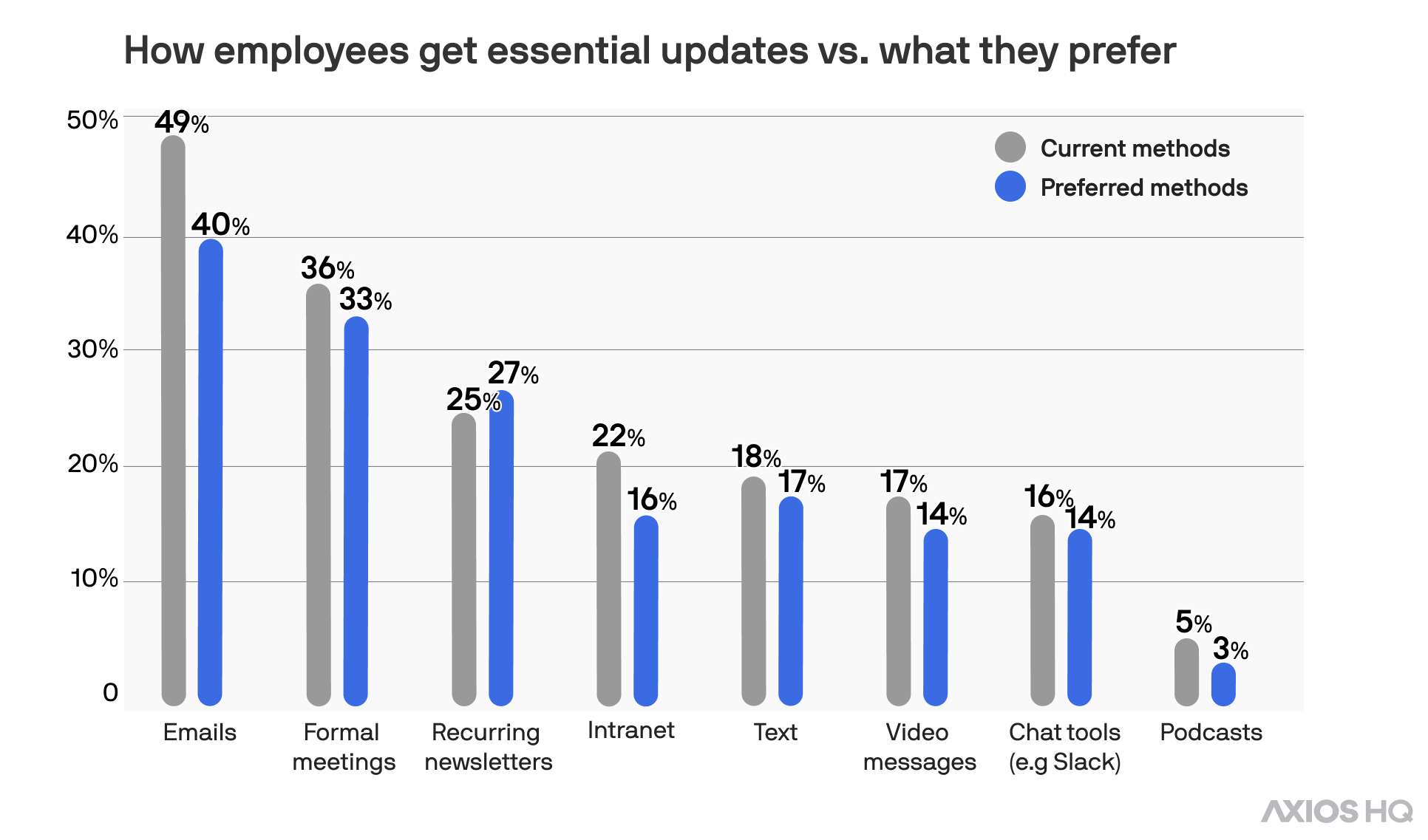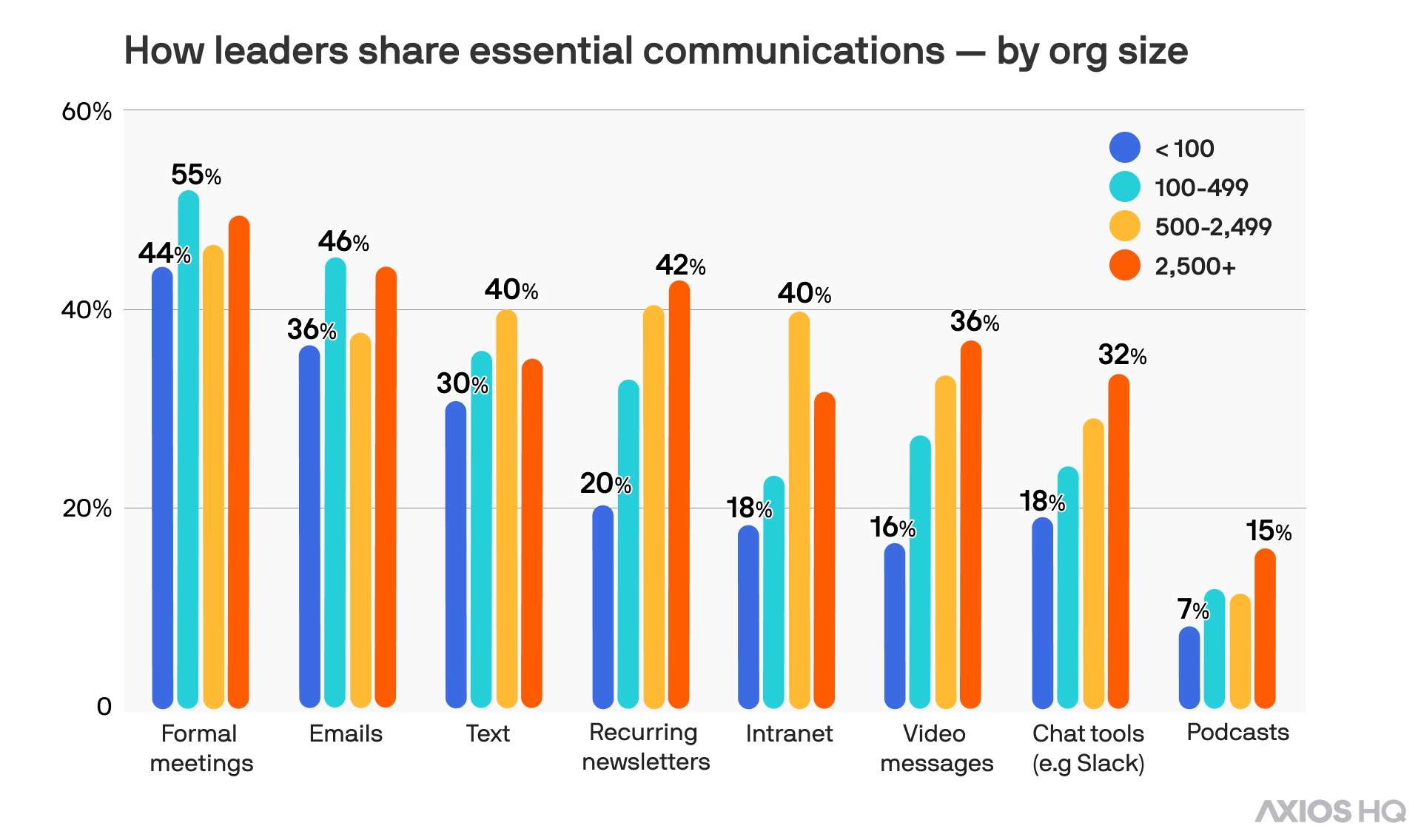Apps, IMs, and intranets aren't where employees want internal communications

The average large organization had its teams using 211 different apps in 2021 — with 27% of them duplicating features from one another or adding no value at all.
- Why it matters: Workers context switch between different apps and websites 1,200 times a day, and it’s making focus plummet, stress rise, and burnout reach a point of being overwhelming.
And it’s not just apps that are distracting workers and contributing to information fatigue, it’s meetings, constant notifications, and inaccessible information:
-
Video calls — 32% of workers are spending more time on them than one year ago.
-
Unnecessary meetings — they lose 2.8 hours every day because of them.
-
Slack messages — they get 125-200 messages each day.
-
Searching for what they need — they spend 2.5+ hours each day searching tools, docs, and data sources, for the information they need to do their jobs.
To keep employees engaged, informed, and aligned with your goals, leaders need to update them without overwhelming them — or contributing to the information fatigue and burnout they’re experiencing. That means meeting them where they are, rather than expecting them to check 211 apps each day. That means telling them what matters, rather than hoping they all analyze and prioritize in the same way. And that means making sure internal communications are easy to consume, so they can get through them and go use them.
A recent Axios HQ’s survey of over 1,500 workers and leaders found only 14% of employees want to receive essential communications — the details they need to do their jobs well — through chat tools like Slack and only 16% want those updates through intranets.
Their preferred methods of communication:
-
Emails: They’re still the top way employees say they want to receive crucial information. They come to them, rather than force folks to go looking. The balance is staying clear, relevant, and specific. When emails get too long, or too boring, trust and engagement quickly decline.
-
Formal meetings: Connecting in person or on Zoom is one of the most human ways to share information and get real-time feedback. The balance is making sure everyone has the same context so conversation can be focused, productive, and forward-looking.
-
Newsletters: Across organizations of all sizes, newsletters are the only method of communication employees said they’d like to see more of. Done well, they cut down on inbox noise and help internal updates stand out.

As organizations grow, the mix of communication channels their leaders use to reach and engage employees does, too. Emails, meetings, and newsletters are still the top ways leaders share internal updates — outpacing methods like intranets, video messages, chat tools, and podcasts.
-
42% of leaders send internal workplace updates by newsletter in companies with 2,500+ employees.
-
40% of leaders send internal workplace updates by newsletter in companies of 500-2,499 employees.
💭 Our thought bubble: Effective emails and smart, focused newsletters meet readers where they are during most working hours — in their inbox — and put the latest insights and information they need to stay productive all in one place. They also become the front door, the driver that links folks to your other channels — whether it’s an intranet article or podcast episode — if readers have the time and need to dig deeper.

The bottom line: Internal communication management is all about understanding where your employees prefer to access vital information, meeting them where they are, providing it on a reliable cadence they trust, and structuring it in a way that’s clear, accessible, and cuts through.
Go deeper: Take a look at how top orgs are sending their internal communications as newsletters.





.webp)












.webp)

















